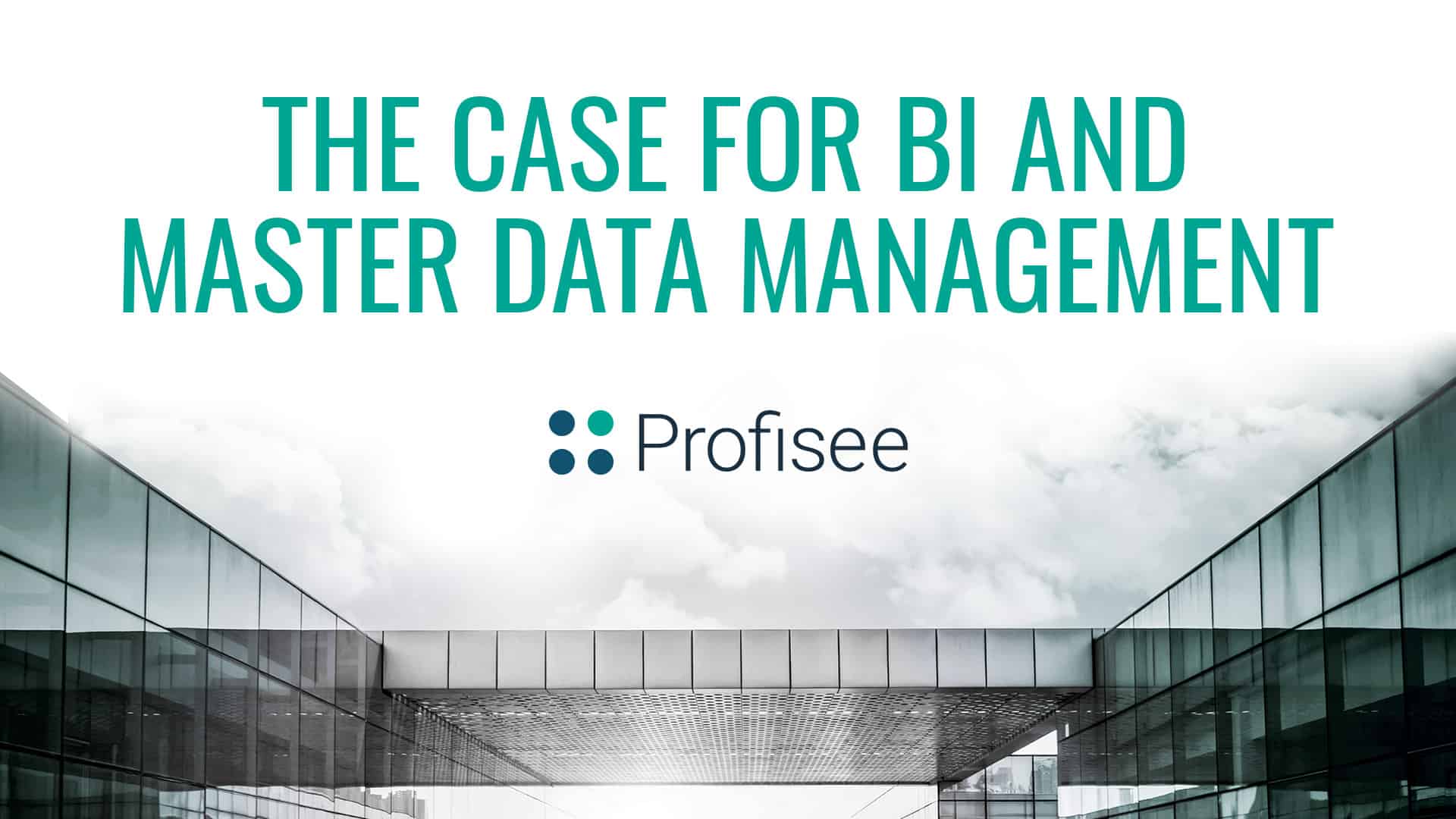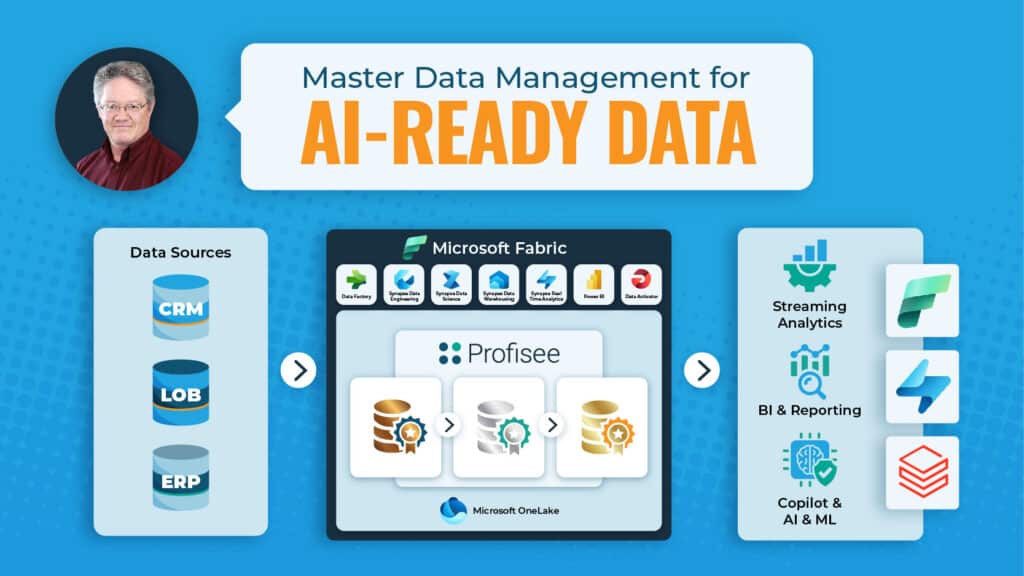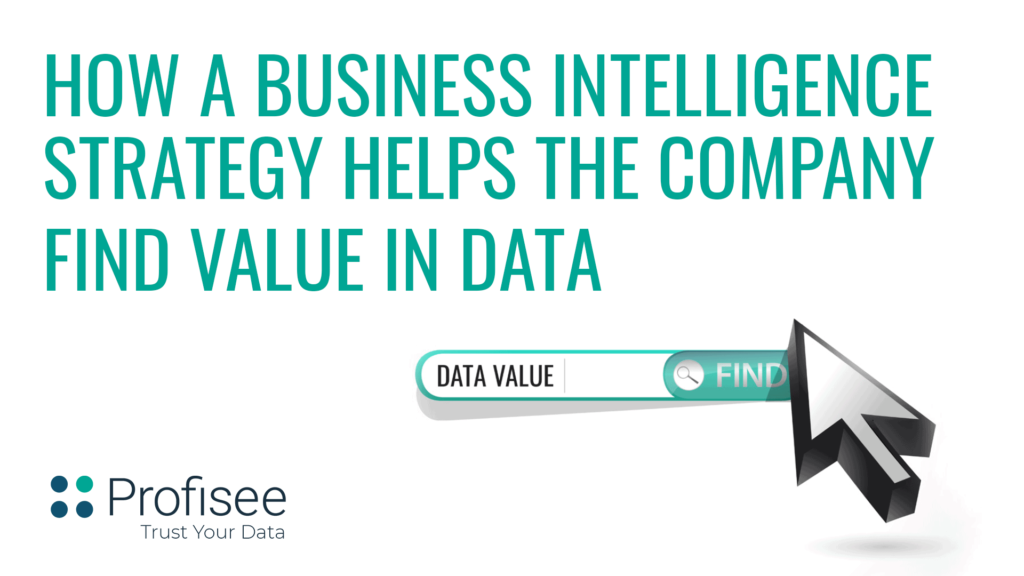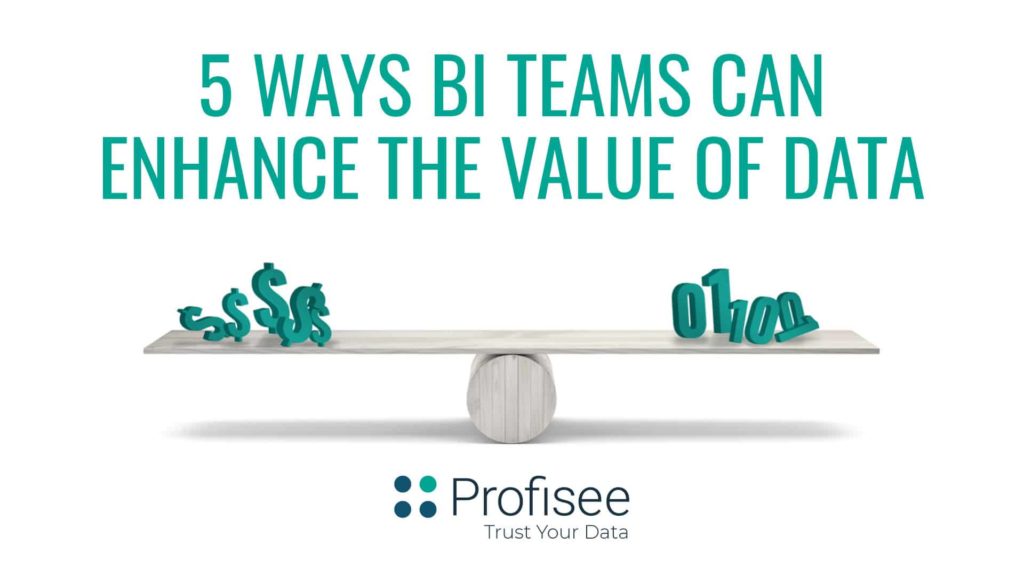What is Master Data Management? Master Data Management (MDM) fixes data quality problems, creates clean master records, and manages changes in those records. That’s the short version.
The reality is, unsurprisingly, slightly more complicated.
Modern business is always in motion. So, something like this happens:
- Business A considers a vertical merger with Business B, a partner in some spaces, with some shared clients. Business A requests reports and analytics from Business B, along with a sampling of 500 individual customer data records, to help properly value the company. Business B provides the data, sourced from three separate systems and then collated manually.
- Business A imports Business B’s customer data into their MDM solution and runs validation rules. The results show only 350 unique customers. Data duplication caused an inflated customer estimate.
We know Business A and Business B share some clients. With customer data from several sources, we don’t know if John Smith on A Street and John Smith at #16 A St are the same person.
We need to know that. If we don’t know that, our analytics are off. Way off. And our business intelligence? Not quite so intelligent.
MDM gives us a data model to work from—a structure to help identify and fix conflicting data, remove duplication, create a single source record (sometimes called a golden record) and make sure that record and its data stays clean. Once created, a golden record can weather new mergers, channel expansion, diversification, divestitures, and a partridge in a pear tree. Or a half million partridges in a half million pear trees. That’s a lot of pear trees.
What does MDM offer? Here’s a quick list:
- Prebuilt data models
- Fast and flexible search
- Duplicate data ID and elimination
- Master record creation
- Hierarchy management
- Quality data sharing with Customer Relationship Management (CRM), Enterprise Resource Planning (ERP),
- and Product Lifecycle Management (PLM) apps
How does MDM help BI?
At the 2013 Enterprise IQ MDM and Data Governance Summit, the MDM Institute predicted the need for proactive, tightly-integrated data governance to marshal the growing volume of “living” data required for modern business operations. The future-forming of five years ago is today’s reality. Today, business intelligence is smart if the underlying data is accurate. And MDM builds accurate data.
Our merger example describes Business B bringing data from several different sources — databases, siloed legacy systems, even paper records. Each data source has slightly different rules and methods for entry, so the records have to be consolidated manually. When records need updating, those updates might have to happen in two or more places. That process will not be perfect.
MDM automates that process, using flexible, customizable rules. The result is a consolidated, error-free master data set designed to improve BI reporting accuracy. Snazzy charts and actionable visualizations are terrific tools—as long as they actually help you understand the finances, operations, and customers they’re
meant to represent.
The purpose of BI is to understand fundamentals: Product/service user profiles, key conversion pathways, engagement. If you’re pursuing bigger business, building toward bigger goals, you’ll need the best possible data quality, effectively aggregated in a long-term management system, to get you there. That’s MDM.
Is There A “One Size Fits All” Solution?
Our merger example illustrates a fundamental MDM challenge: Each situation is different. Business B has three data management systems, all separate. Business A has only one, but it is different from the Business B systems. Managing internal versus external data, various forms of external data, and aggregated data from separate external systems requires a broad spectrum of tools.
Once the business merger is complete, new data requirements will likely surface, changing the game again. Heraclitus said all entities move and nothing remains still. The popular paraphrase is “change is the only constant.” It’s not a new concept. But the sheer amount of data we deal with now would have staggered the ancient Greeks. Our world is bigger, more complex.
That said, the basic process for generating cleaner data, leading to stronger BI, can be expressed pretty simply.
- Extract and gather.Transfer the data from all sources and pull it together.
- Evaluate that data and identify a source of truth.Determine the most accurate, reliable data source in the mix. That source can then serve as a benchmark for the master records (golden records) you create later. You may rely on different sources for different types of data—for example, one system has better customer address information than the others, while a second system has better product information—but the principle is the same.
- Manage the data over time.Data already in the system will change. New data will be added. All entities move and none remain still, right? Your system has to be resilient and flexible enough to handle that. MDM is resilient and flexible. And it’s designed to handle that.
How Do We Implement?
Identify the business driver and associated data.
Often, a single significant pain point is the beginning of a serious MDM conversation. This is a great place to start the MDM process—on a limited scale, with minimal impact on existing business processes (hopefully making them easier), requiring few additional stakeholders to sign off. Identify the pain point, define the data assets associated with it, and bring that information into the next step:
Evaluate current data quality.
Fact: Your data quality is suffering due to current business processes. We know that because you’re here. So let’s nail down some specifics. Are you Business A, with one siloed system? Are you Business B, with three incompatible systems requiring a lot of manual labor to integrate? Most businesses have some data management that works, and some that doesn’t. Some clean data, some that looks like the grey water you use to keep your flower garden happy. To solve the problem effectively, we need to know what kind of shape we’re in before we start.
Identify the integration path.
Our Business A/Business B situation has four different sources. Your business might have more. It might have less, but deeper integration challenges. If your data comes from a combination of hand-written index cards and cuneiform carved into stone tablets, you have a deep integration challenge. Better hire a couple of extra interns next summer.
Assess the business impact.
We’re starting from a single business driver to minimize impact, but there is always some impact. Cost and impact are the two aspects of implementation with the greatest potential for eliciting a “no” from stakeholders. Know the impact, and have a handful of solutions ready to head off the inevitable questions.
Choose an MDM implementation that best supports that path.
Due diligence is critical. All MDM solutions are not created equal; in fact, all MDM solutions are not even created to solve the same problems. There is no such thing as too much research. Make sure you understand what you’re bringing in. Choose wisely, and be everyone’s friend.
Don’t be the person who showed up to work late. Be the person who brought breakfast for the whole team.

Forrest Brown
Forrest Brown is the Content Marketing Manager at Profisee and has been writing about B2B tech for eight years, spanning software categories like project management, enterprise resource planning (ERP) and now master data management (MDM). When he's not at work, Forrest enjoys playing music, writing and exploring the Atlanta food scene.











